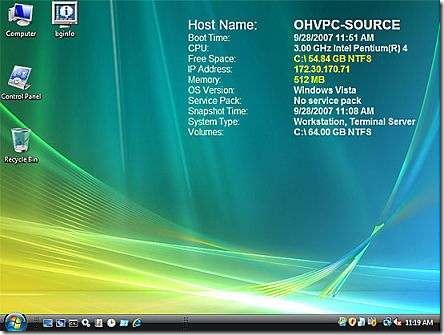When looking for solutions for computer-related problems on a forum, you are asked to provide system information such as details of the processor, RAM, operating system and so on. Searching the Control Panel for this information can be irritating at times. So how do you keep this handy when in need? A good option is to leave this task to a program which reads into the system information and turns it into your desktop wallpaper. It’s called Bginfo, by Microsoft Sysinternals. It . So whenever you need it, you don’t need to dig into your operating system or Control Panel as It automatically displays relevant information about a Windows computer on the desktop’s background.
Download the compressed file, make a folder named ‘Bginfo’ in the Windows folder, and extract the contents of the downloaded file into it. Execute the program. When the main window appears, there’s a button at the top-right corner, which reads ‘Time remaining’. Click on this to keep the program from closing automatically after ten seconds. When you click ‘Preview’, you’ll see what the wallpaper looks like.

You can make changes to it from within the application. All preset values such as font, and background are selected in the text area, and can be formatted here. If the standard font is excessively large, select all the details, and change the font size to suit the appearance of your desktop. Use the ‘Option’ tab and click ‘Position’ if you want to change the location of the displayed information on the desktop.
Since some values, such as the name of a network card, are lengthy, their extension can be restricted with the ‘Limit lines to’ option. Click ‘Background’ if you’d like to change the overall appearance of the wallpaper. The default option ‘Copy user’s wallpaper settings’ leaves the current wallpaper unchanged, except that it displays the information on it. This proves to be the best setting for most situations.
When you are done with the settings, click ‘Apply’ and then click ‘Ok’ to close the program. Usually, the settings are stored in the registry, but alternatively, you can store the settings in a BGI file. Go to "File > Save as", so you can transfer the preferences to another PC if you’d like. To automate the application, create a program shortcut in the ‘Startup’ folder. This tool doesn’t have any ill-effects on system performance. It only modifies the wallpaper with the information found and then closes on its own when the countdown timer is left on.

“But have you become a renowned scientist in Europe by the age of fourteen?” Shinji cut in, still reading the files.
Display System Information as your Desktop Wallpaper – BgInfo was specially informative thanks, I believe your ongoing audience may require way more items of this nature. There is no smoke without a fire and in that respect there are no remarks without articles.